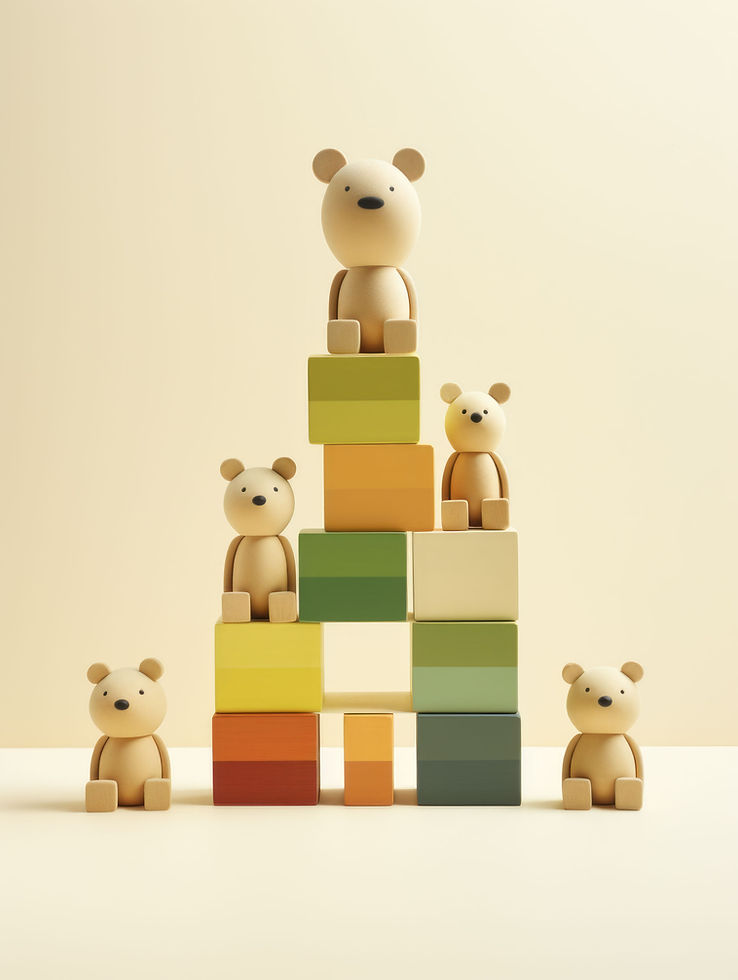
How our Early Home Life Shapes us. Some insights Shining a Light on the psychological philosophical and sociological Effects of Early Life Experience :
- Tomlin Therapy
- Apr 26
- 3 min read
Updated: Jun 13
Child Development, Early Experience, and What can be a Tricky Path to Authenticity
Human beings don’t learn only through instruction, but through experience—especially in the early years of life. A child doesn’t have the cognitive capacity to critically assess or interpret their surroundings. Instead, they absorb. They watch, listen, feel, and internalise the emotional tones and patterns of behaviour around them. This forms the early blueprint of the self.
Psychologically, a child’s mind is like wet clay: deeply impressionable. If they are surrounded by stability, affection, and coherent guidance, the clay begins to shape into adaptive, healthy patterns. Good habits—such as trust, curiosity, patience, and emotional regulation—are seeded and nurtured. But when the environment is chaotic, violent, neglectful, or inappropriately sexualised, very different patterns emerge. The child’s nervous system begins to adjust to these conditions, encoding them as “normal,” even when they are damaging. From a sociological standpoint, this is how certain forms of dysfunction are transmitted generationally: the environment teaches without words, and the child learns without question.
Philosophically, this process raises important questions about the nature of the “self.” Are we, in essence, simply the products of our early environments? Jean-Paul Sartre argued that existence precedes essence, implying that we are free to choose and create ourselves. Yet, early developmental psychology reminds us that before the freedom of adult choice, there is the near-total dependence of childhood learning on caregivers Initially, our “choices” are often not really choices at all—they are conditioned responses, built on the scaffolding of early life example or experience.
The habits formed through early experiences—whether they involve anxiety, self-doubt, hypervigilance, or emotional shutdown—become deeply ingrained in both mind and body. These patterns are often misidentified as personal truths: “This is just who I am.” But they are not truths; they are adaptations, ‘parts’ of ourselves, we can begin to explore in therapy these parts gently , becoming curious of them, seeing how they are or might be protecting the wounded self.
The mind, always seeking the familiar, plays tricks on us, nudging us back toward the familiar sensations of childhood even if those sensations are painful. Familiarity feels safe because it feels known, not necessarily because it is good.
Healing and change, therefore, require a profound disruption of this cycle. Therapy, meditation, and self-inquiry act as tools for “deep mining” into the layers of conditioned habit. But this can be challenging . As old patterns are exposed, the individual often experiences a temporary dysregulation: confusion, emotional flooding, even shock. The nervous system protests the loss of its familiar anchors. This is a necessary and even healthy stage of the journey.
In this transitional space—between old familiar suffering and new unfamiliar freedom—authenticity begins to emerge. Understanding grows. Emotions are processed rather than suppressed. Relief begins to temper fear. Over time, a new normal is forged, one not based on blind repetition, but on conscious awareness.
Sociologically, when individuals heal these patterns, they interrupt cycles that would otherwise continue across generations. Philosophically, they affirm human freedom—the ability to transcend their past. Psychologically, they rebuild the neural structur of selfhood, moving from survival modes to thriving existence.
In the end, the journey from conditioned habit to authenticity is both a return and a departure: a return to the basic goodness and vitality that were always possible, and a departure from the illusions that early experience once made necessary.

Change is always possible but not always comfortable. Deep growth needs time and self forgiveness, support and understanding, regulation .
The therapist needs the ability to hold space safely.


